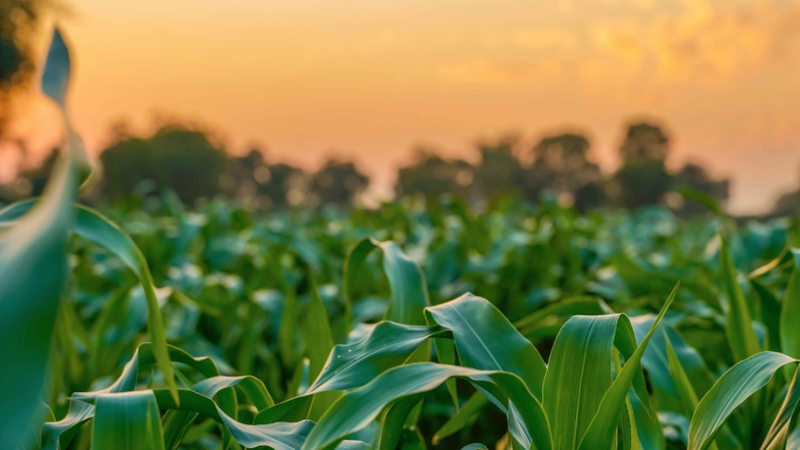Revisiting Agriculture 3.0
Some of you may remember an article I authored a year or so ago entitled “Get Ready For Agriculture 3.0.” I have been writing various articles in this industry for nearly 20 years, and I can unequivocally say that article elicited more comments (both positive and negative) than anything I have ever written. Change is always emotional, and the transition from the agriculture we all knew for most of our careers and the phase that started over the past decade or so (which I have dubbed Agriculture 3.0) is more emotional than most.
In trying to understand why this is such a difficult transition, I’ve become convinced the answer is technology convergence. Before I explain how this applies to agriculture, let me define the concept.
Remember back in the day (about 10 years ago) how we used to have a simple cell phone and a computer in our office? If you were “out there,” you also had a Palm Pilot or some other PDA to store your contacts. None of these tools talked to one another or really integrated much in any way. If you wanted to call somebody, you got out your PDA, looked up the number and keyed it in on your cell phone. You could export your contacts periodically from your computer to your Palm Pilot by connecting a cable.
Fast forward to today. Our smartphone allows us to get a name, surf the Web and make a call. It is synched instantly and wirelessly with our iPad and desktop via the cloud. The technology has converged, and now these three tools are connected with one another.
The challenge, which I found out in spades this week when I tried to view a Word document on my new iPad, is that Apple (iPad, iPhone), Google (Android) and Microsoft (Windows, Surface) are locked in an epic battle to see whose proprietary platform will rule the universe (with little interest in seamlessly connecting with their rivals).
There are lots of subplots and intrigue in this battle. It’s ironic, for example, to see the Apple folks who complained bitterly for years about how Microsoft was trying to leverage its huge “installed base” of Windows users to block others now vigorously pursue the “App Store” in an attempt to do precisely the same thing. It’s sad, too, to see companies like Research In Motion — that developed the highly successful Blackberry — see its fortunes decline dramatically when it was unable to offer the complete bundle and interoperability that customers demand.
Convergence In Agriculture
So what does this have to do with Agriculture 3.0? Well, the exact same technology convergence is happening in agriculture! So what technologies are “converging” in Agriculture 3.0? In my view, the formerly distinct areas of crop nutrition, crop protection, precision agriculture and seeds are actively converging (Figure 1.)
While there has been slow convergence in agriculture going on for a while, the explosion of the seed treatment business is accelerating the trend dramatically. If a company takes a proprietary seed, coats it with a proprietary crop nutrition and crop protection package and applies it using proprietary application equipment which can leverage its database on the performance of its hybrids at various planting depths or in various soil types, what business is it in?
The answer, of course, is that this company is in all these businesses simultaneously, in exactly the same way that Apple or Microsoft are in the phone, tablet, PC and software businesses (and the desire to control the platform is just as strong).
What are some of the “hot spots” in this convergence play?
- Seed Treatment — where all four disciplines can be brought to bear.
- Precision Decisions — any area I refer to as Dynamic Decision Making (DDM), which involves integrating disparate sources of data simultaneously to optimize agronomic performance.
- Micronutrition — understanding at a molecular level what drives nutrient availability and delivering appropriate solutions.
- Cloud Computing — the ability to seamlessly integrate and store data in a single secure, remote location that provides for data security and optimal decision-making.
- Microfarming — the ability to leverage highly accurate GPS tools to reduce precision agriculture to a strip within a field where optimum nutrition and plant health solutions are applied.
Finally, here are a few logical questions for thought based on this transition:
- Will proprietary or “open source” systems predominate in agriculture?
- Any guesses on who the aggie “Microsoft” or “Apple” are?
- Which companies will become agriculture’s version of “Blackberry,” with great technology and arguably superior solutions in a narrow niche who get passed by because they cannot offer the integrated solutions the customers seek?
- What role will the increasing powerful ag channel players play given their strategic position as the trusted advisor to many of the customers?
- What kind of acquisitions will the larger players need to make to “complete their portfolio?”
- How do earlier stage technology companies need to position themselves to be relevant and valuable in this emerging paradigm?
In coming months, we will be examining the impact of these technology convergence on the four areas outlined above as well as try and handicap the race to answer the questions above. While it is unclear how all this will play out, what is absolutely certain is that the strategic insight required of any senior manager in the ag sector has never been higher.






